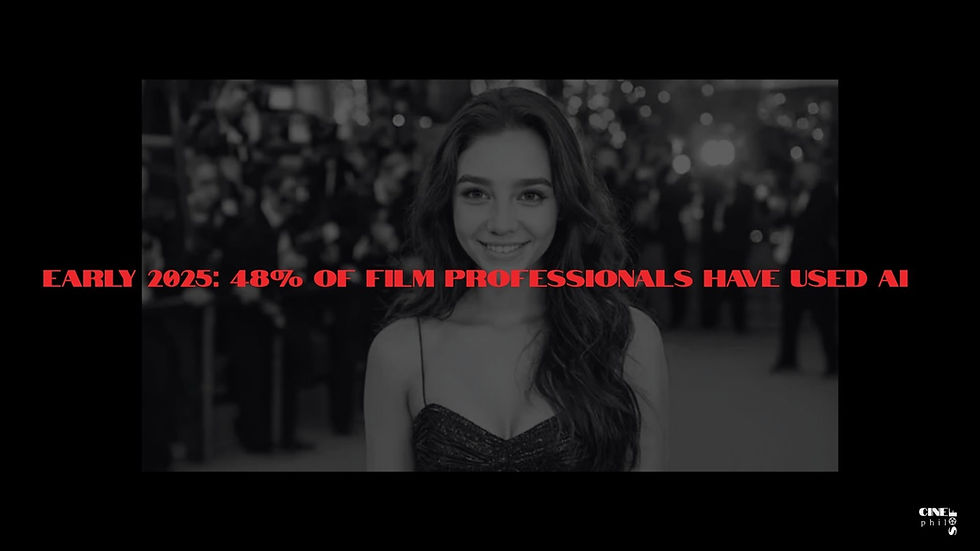Beyond the Tomb: The Mummy at 25 - Controversies, Colonialism, Cultural Heritage
- Sofia R. Willcox

- Oct 24, 2024
- 3 min read
It's spooky season, and 2024 marks 25 years since the release of The Mummy (Stephen Sommers, 1999). Let’s unwrap the mysteries hidden behind the linen strips—it goes beyond just the preservation of the body after mummification. The figure of the mummy might tap into society’s deepest anxieties, much like other iconic Halloween ‘monsters.’ One October at a time.
As many know, mummies have their origins in Ancient Egypt. It was a religious practice that involved preserving the body in a life-like state for the afterlife. The process usually took about 70 days and involved many steps. Today, many of these mummies are found in Europe-based museums, which raises a few inquiries—both ethical, in terms of respecting the deceased’s beliefs, and for the viewers. Not only that, but there’s a whole objectification behind it, involving colonial exploitation and the othering of these cultures, reducing them to a spectacle—something savage or primitive.
As for the movie, The Mummy was an attempt to revive the adventure genre in an Indiana Jones style, even though it’s a remake of a 1932 film. However, over this quarter-century, the 1999 version’s appeal has waned, despite being a box-office hit and holding a feel-good status for many. The casting, far from being authentic to Egypt or the MENA region, features characters in make-up to mimic local appearances, creating stereotypes and caricatures that shape our collective imagination and whitewash history. The story itself, much like Indiana Jones, carries a white saviour complex.
To understand these portrayals, it's essential to acknowledge Egypt's history as a British protectorate from 1882 to 1922. This colonial context shapes Western narratives of Egyptian culture, often viewing local customs through a lens of superiority and objectification. Set in 1932, The Mummy not only presents an adventure but also perpetuates colonial tropes that oversimplify diverse cultures. Even after the protectorate ended, British influence over Egypt's military and economy continued, fostering cultural appropriation and distorting the complexities of Egyptian history and society through exoticism and otherness.
In these films, the central character is typically a white, straight, cisgender male American who embodies retrograde ideas like manifest destiny, the white saviour trope, and traditional masculinity. The narratives often revolve around his adventures in foreign lands, where local inhabitants are frequently portrayed as villains, savages, or primitive people with basic weapons like bows, arrows, and swords. These characters lack depth, personality, identity, or culture, perpetuating negative stereotypes. The films reinforce American culture as superior while marginalizing and “othering” other cultures.
There’s a clear contrast between the protagonist and the villain. Rick O’Connell is portrayed as highly educated, possessing extraordinary abilities, and as a firm believer in manifest destiny, "rescuing" historical artifacts from theft, though he’s doing it for American museums. This ideology, rooted in the 19th-century Westward Expansion, suggests that the United States is divinely ordained to expand its influence, spread democracy, and advance capitalism across North America.
The portrayal of Arab and Egyptian characters in The Mummy is fraught with stereotypes. Arabs are often depicted as violent, hypersexual, or a combination of both, while Egyptian characters are reduced to dirty, uncivilized figures in stark contrast to the polished American and British leads. These local characters frequently serve as little more than expendable extras, existing only to emphasize the dangers faced by the film’s white, colonialist protagonists. Even the Hungarian comic relief character is a problematic stereotype, further perpetuating the film’s reliance on shallow caricatures.

In literature and film, mummies are often depicted as grotesque or decaying, reflecting broader fears of the unknown or fascinations with death, decay, and bodily preservation. When applied to women, these depictions can tap into cultural anxieties about aging, mortality, and the "ideal" female body. A mummified woman may symbolize fears of losing beauty or fertility, sharply contrasting with societal ideals of youth and vitality often linked to femininity. In Gothic literature, the female mummy can represent fears surrounding women’s sexual power or bodily autonomy—especially when set against a protagonist inhaling toxic masculinity.
As we unwrap the layers of The Mummy, we must ask ourselves: What stories are left untold beneath the surface and perpetuating hate, who truly holds the power to tell them? In a world eager for adventure, let’s not forget the importance of honouring the diverse cultures that inspire our narratives rather than reducing them to mere spectacle. There are yet many stories to (re)tell from these “monsters” on everywhere, everything and everyone. One October at a time.




Comments